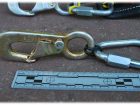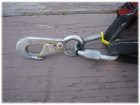
Features
Communication
Training
Trainer’s Corner: Challenging confirmation bias
Like many of my generation, I type using the hunt and peck method (hunt for the letter and peck at it). Since I type with one finger, there are often mistakes, especially if my brain goes faster than my one educated finger. So, I really appreciate the Fire Fighting in Canada editorial staff – they make me sound and look good. You should never do your own proofreading anyway. I could easily type “Teh” thinking it to read “The.”
February 21, 2018
By Ed Brouwer
This is referred to as confirmation bias, the tendency to interpret information in a way that confirms our preconceptions or expectations, and to ignore any contradicting evidence.
Another characteristic of confirmation bias is that we do not see the change, or if we do see it, we undervalue its importance.
A prime example would be PASS alarms going off on the fire ground. Firefighters have been told countless times during SCBA practice to shake in order to stop the PASS alarm from activating, so many times in fact that it no longer sends a warning that a firefighter is in trouble.
Research in visual attention has revealed several ways that people don’t see what is in their visual field: inattentional blindness, change blindness and confirmation bias.
Inattentional blindness is the “looked-but-failed-to-see” effect. It happens when people fail to notice fully obvious things right in front of them while paying attention to something or someone else.
How often does this happen at a fire scene? It is easy for the incident commander’s (IC) focus to be on one aspect of a scene while he or she overlooks what someone else may see as fully obvious. Inattentional blindness has been cited as one of the most common causes of traffic accidents.
This confirms the need for more than one pair of eyes performing a continual size-up of the scene. It is of the utmost importance that safety officers and ICs work in tandem.
Change blindness is a failure to notice that something is different from what it was. Every married man on the planet has probably experienced this. Over the past 43 years of marriage, my wife has looked at me many times after getting a new hairstyle or hair colour and asked, “Well?”
I now know when she stands directly in front of me and says, “Well?”, it means I better do a quick size-up.
So, on the fire ground, has the safety officer or IC noticed any changes in smoke color, smoke density or volume?
Large changes to a visual scene are likely to go unnoticed if they occur when the eye is moving because visual analysis is suppressed during that time. People may even be unaware of the change if they are visually tracking the object at the moment of change, suggests a 2003 study from UC San Diego.
The fire ground is an ever-changing hazardous environment. Each firefighter must be trained to not only see, but to observe the scene with the understanding that these observations can actually save lives.
Before I close, I would like to draw your attention to a 2009 fatality report regarding Thomas David Marovich, a firefighter with the Chester Helitack crew in northern California. On July 21, 2009, Marovich, a rappeller sustained fatal injuries from an un-arrested descent during a proficiency rappel.
Rappelling is a fast and efficient way of getting to fires in remote areas. Firefighters rappel from helicopters hovering up to 75 metres (250 feet) above the ground.
At 9:55, an equipment check was performed by rappeller No.4 (R-4), in preparation for boarding the helicopter, according to the report. Marovich was informed of a broken Kong clip on his tri-link that was used to centre the Bourdon J-hook at the forward corner of the tri-link. Marovich went to a member of the crew, a spotter trainee, to correct the problem. The spotter trainee opened the tri-link with pliers to replace the broken clip with a rubber O-ring that was an authorized substitution. After the replacement, Marovich closed the tri-link barrel by hand and the spotter trainee ensured the closure nut was tight.
Witnesses said that Marovich then ran back to the helicopter that was in the process of starting. When he arrived at the helicopter, he received a buddy check again from R-4 and a spotter check prior to entering the helicopter.
The helicopter departed at 10:04 with the pilot, rappel spotter and four rappellers. The helicopter performed a high hover check prior to entering the rappel site and established a 67.5 to 75 metres hover over rappel site.
At this time the spotter initiated the rappel sequence and the ropes were thrown from the aircraft and configured with two genies on each rope. The spotter gave R-1 a signal to hook up and lock off. R-1 performed the hookup and lock off to the lower of the two genies. R-1 then presented his genie to the spotter and the spotter visually inspected the hookup and genie. The spotter then signaled for R-1 to move to the skid. R-1 stepped out onto the right skid and prepared for his descent, waiting for the opposite rappeller to get into position. The spotter then gave Marovich the signal to hookup and lock off. Marovich performed his hookup, locked off to the lower of the two genies, and presented his genie to the spotter.
Marovich then moved out to the left skid, holding onto the Figure 8 (a metal descent device used to deploy cargo) with his right hand as he exited the helicopter after letting go of the ring, Marovich disappeared from the skid and witnesses onboard felt a slight bump through the ship.
Witnesses at the helibase observed an uncharacteristic movement from Marovich as he began to position on the skid and then almost immediately leaving the skid and entering an excessively fast descent with a few witnesses observing white smoke coming from the rope and his feet “pedaling.” The height of the fall is estimated to have been approximately 67.5 metres.
Response by helitack crews on the ground and emergency medical personnel was immediate but attempts to stabilize him were unsuccessful. Marovich was pronounced dead about 30 minutes after the event.
This was a horrible accident but completely preventable. The investigation report revealed that the J-hook was not properly placed within the closed tri-link when an equipment replacement was made prior to boarding the helicopter. The initial equipment checks by Marovich and a spotter trainee after modification of equipment, and redundant equipment checks outlined in the Helicopter Rappel Guide that were performed by another rappeller and the spotter, failed to expose the improper rigging of the J-hook and tri-link.
The bottom line is that the J-hook was inspected five times by four different individuals, yet no one noticed the improperly placed O-ring.
Confirmation Bias: A repeated review of an established condition (e.g. a correctly configured harness) reinforces the expectation that the system is in that specific configuration. This is an example of reinforcement through experience which leads one to miss potentially critical anomalies.
The existence of inattention and change blindness, as well as the influence of expectations on vision (confirmation bias), helps us make sense of this tragic event.
How many times do we do a buddy check especially before entering IDLH environments. How often does the colour of smoke change without the IC taking note? How often have we said, “I thought I opened that,” or “I thought I closed that?”
Until next time, stay alert and stay safe out there. Remember to train like lives depend on it, because they do.
Ed Brouwer is the chief instructor for Canwest Fire in Osoyoos, B.C., and deputy chief training officer for Greenwood Fire and Rescue. He is also a fire warden with the B.C. Ministry of Forests, a wildland urban interface fire-suppression instructor/evaluator and an ordained disaster-response chaplain. Contact Ed at aka-opa@hotmail.com.
Print this page

